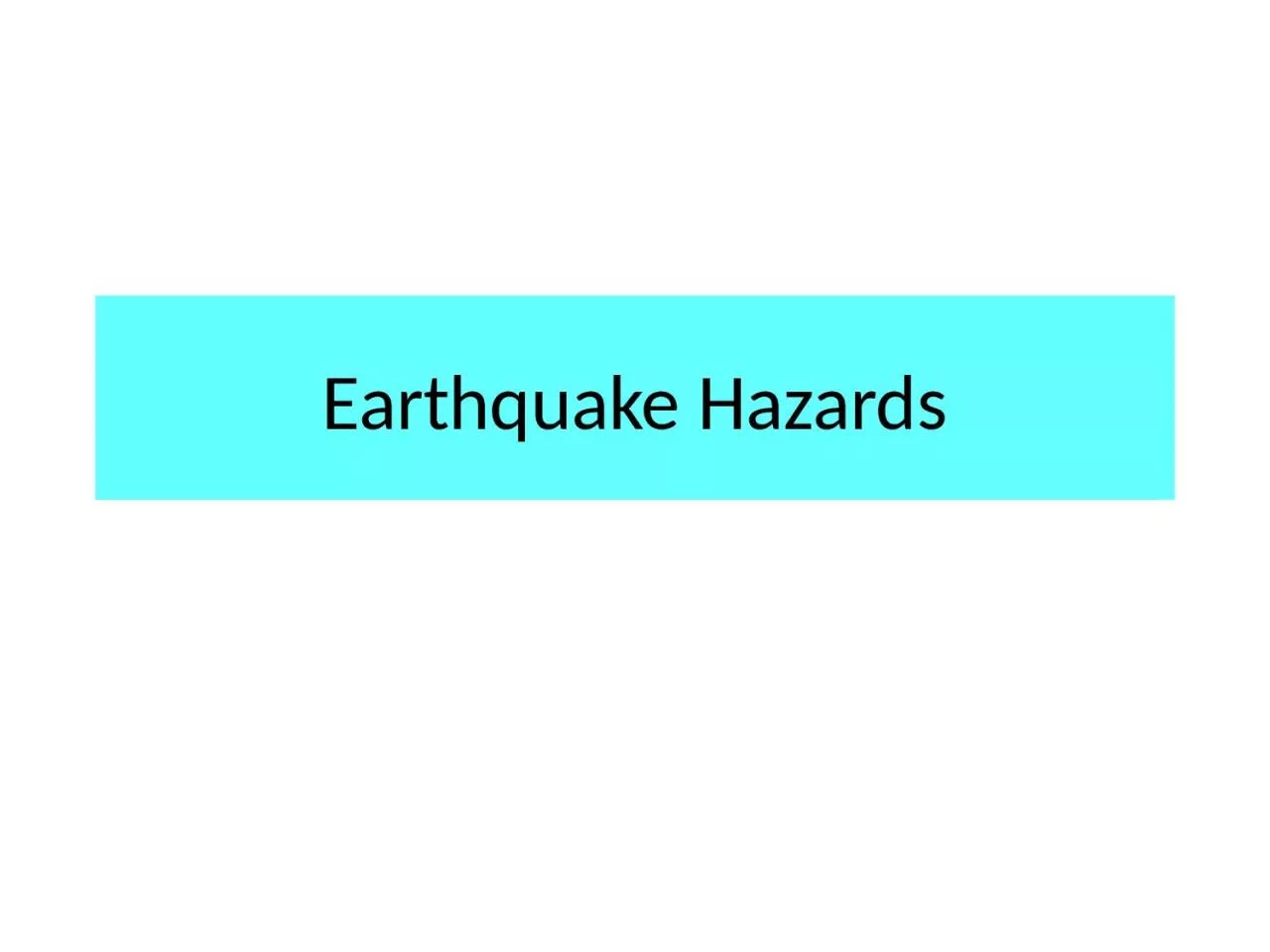

Amount and duration are related to the amount of energy released Which hazards do you know Earthquake Hazards Tsunami displacement of a large volume of water Shallow hypocenter large volume of displaced crust large earthquake ID: 1027000
Download Presentation The PPT/PDF document "Earthquake Hazards Hazards are produced ..." is the property of its rightful owner. Permission is granted to download and print the materials on this web site for personal, non-commercial use only, and to display it on your personal computer provided you do not modify the materials and that you retain all copyright notices contained in the materials. By downloading content from our website, you accept the terms of this agreement.
1. Earthquake Hazards
2. Hazards are produced from the response of energy releasedAmount and duration are related to the amount of energy released
3. Which hazards do you know?
4. Earthquake HazardsTsunami: displacement of a large volume of waterShallow hypocenter, large volume of displaced crust, large earthquakeGround shaking: determined by proximity of epicenter; magnitude of earthquake; and earth materials
5. Ground shakingIn general, more intense closer to the epicenter: exceptionsMexico City, 1985- 200 miles from epicenterLoma Prieta, 1989- 60 miles from epicenter
6. Seismic wave energy dissipates faster when there are more rock layers. Notice the area in Southern California is smaller than in the New Madrid area. The geology in Southern California is much more complicated.
7. Seismic waves vary in amplitude and wavelength depending on Earth materialBedrock is more dense- higher frequency, lower amplitudesSoft mud is less dense-lower frequency, higher amplitudes
8. LiquefactionMagnitude 7.5 or largerGround turns to slurryOccurs where water meets landEspecially unengineered fill
9. Liquefaction: earth material can no longer support any structures including water lines and pipes
10. Liquefaction, Japan 1964
11. Landslide
12. Massive Landslide, Turnagain Heights
13. Sand volcanoes occur in association with liquefaction: >M7 Alaska, 2002Japan,1964
14. Sand volcano, Loma Prieta earthquake
15. Geologists infer a large earthquake occurred due to the presence of the sand volcano The timing is determined using carbon 14 dating methodsSand Volcanoes
16. Ground Rupture Landers, 1992- Mw 7.3Hecter Mine, 1999- Mw 7.1
17. Ground Rupture: 1906 earthquake
18. Landslides or mass movementDifferent types of earth material are stable at different anglesAngle of repose: dry sand versus wet sand
19. Angle of repose: depends on Earth material and climateCoast Ranges, CaliforniaUtahNumbers indicate different part of slope but not addressed in this class
20. Any change in physical properties of the earth material, causes the slope to readjustChina, 2009Landslides or mass movementEl Salvador